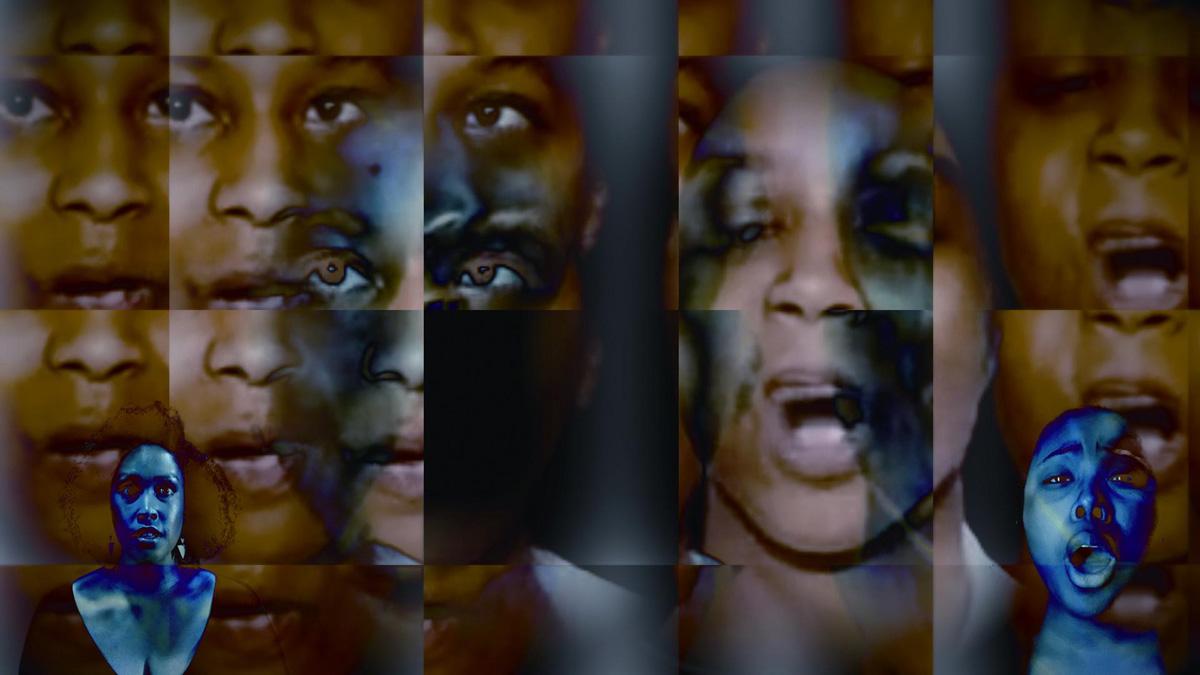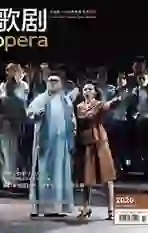后疫情时代的歌剧(四)
2020-03-18JoannaC.Lee
Joanna C.Lee
小瓊:最近,一些有远见的团体给年轻艺术家们设计了一些方案,帮助他们在备受新冠疫情打击的当下来充分发挥自身才能。弹射歌剧团(Catapult Opera)是纽约新兴的歌剧团体之一,8月下旬,其宣布创办的“加速比赛”项目反响非常热烈!
小薇:根据官网(www.catapultopera.org)的介绍,本次比赛的目的旨在“激发在保持社交距离的前提下表演形式的创新”。参赛团队必须从四段5分钟长的歌剧选段(分别是娜迪亚·布朗格的《死城》、大卫·赫茨伯格的《唤醒的世界》、细川俊夫的《乌鸦》、埃洛琳·瓦伦的《沉默的双胞胎》)中选择一个参赛。之所以选取这些选段,是因为它们只需要两名歌手的演唱再加上钢琴伴奏,两名歌手之间也有很多对手戏可展现。
小琼:确实,考虑到欧美当前的疫情现状,鲜少能见到舞台上的现场演出,因此过渡到网络线上演出也是顺理成章的。大都会歌剧院每晚的在线播送很好看,但最近剧目重复的频率也太高了。
小薇:“加速比赛”最吸引人的是参赛作品的制作也需要遵守保持社交距离的规则,而且参赛者只有三周时间来准备演出视频。
小琼:制作现场的舞台演出总是需要有导演、舞美设计、灯光设计,有时候还需要一些后台工作人员。那么制作视频短片需要什么呢?很多艺术家非常熟悉科技产品,能够用手机自行拍摄,还有一些会用更先进的技术自己剪辑各种来源的原始片段。
小薇:最终提交的六部作品,每部都有很好的观赏体验。比方说,其中有一部作品,两位同屏的歌手实际上是分开拍摄的。类似的技巧还有把视频社交软件Zoom的视频框拼在一起,这样就把屏幕分成了两半。
小琼:最终获胜的团队表演的是《沉默的双胞胎》(根据朱恩·吉布森和詹妮弗·吉布森的真实经历改编而来)。参赛者将真实的双胞胎姐妹的容貌借助人工智能影像合成技术(Deep Fake)动态呈现在两位歌手的脸上,就好像“现代的木偶戏”一样。该团队赢得了5000美元的奖金。而在六组决赛选手当中,另外一个团队恰巧就用了真正的木偶动画来诠释他们的选段(细川的《乌鸦》)。总而言之,这几部音乐演出视频都制作得浑然一体,恰到好处。
小薇:目前许多音乐家都面临经济上的困难,参赛选手们是如何在这样的状况下仍制作出作品的呢?
小琼:其实,六个团队进入总决赛时,已经各自拿到了1000美元的丰厚启动资金了。
Joan: Several forward-thinking groups have devised ways to help young artists utilize and display their talents in these COVID-laden times. One of New Yorks newest opera companies, Catapult Opera, announced its “Accelerate Competition” in late August and the response has been tremendous!
Valery: According to the website (www.catapultopera. org), this competition was designed “to inspire innovation in the realm of socially distanced performance.” Competing teams must choose one of four 5-minute operatic excerpts (Nadia Boulangers La Ville Morte, David Hertzbergs The Wake World, Toshio Hosokawas Hanjo, Errollyn Wallens The Silent Twins). These were selected because they only required 2 singers with piano accompaniment, and feature much internal drama between the singers.
Joan: Indeed, because of what we are experiencing in Europe and America, live performances on stage are so few and far between that moving to the online realm is a natural transition. Its wonderful to watch the nightly Metropolitan Opera Streams, but theyre getting so repetitive now.
Valery: What makes the “Accelerate Competition” all the more exciting is that the productions must follow social distance rules, and competitors had only three weeks to create the digital performance.
Joan: Live stage productions always need a director,set designer, lighting designer and sometimes backstage staff. So what does a video shoot require? That all depends—some artists are so technologically adept they can film themselves on their cell phones. Others use new, advanced technology to help them edit and manipulate raw footage from a variety of sources.
Valery: Its a wonderful experience to watch all six of the final submissions. For example, two singers appeared on screen at the same time, but were actually filmed separately. A similar trick would be to combine Zoom boxes, so the screen is divided into two.
Joan: The winning team performed The Silent Twins(based on the lives of June and Jennifer Gibbons) using images of the original identical twin sisters but animating them atop the two singers using “deep fake technology, a sort of modern-day puppetry.”They won US$5000. Of the six finalists, another team literally interpreted their excerpt (Hosokawas Hanjo) by filming puppets in animation. All in all, these musical performances were consistently well done.
Valery: With so many musicians in financial trouble, how did the teams even work under these circumstances?
Joan: Actually, when the six finalist teams were picked, each team was given a generous $1000 grant to get started.
